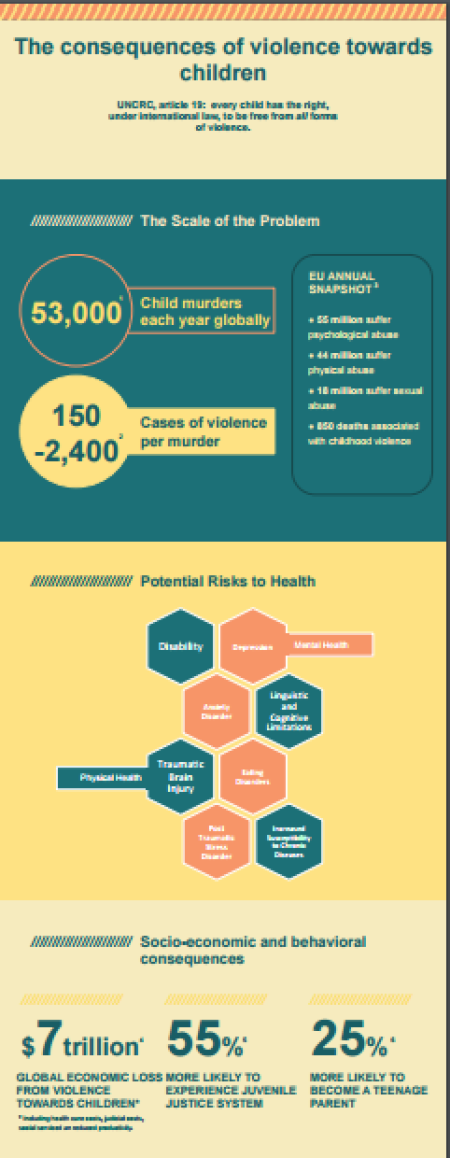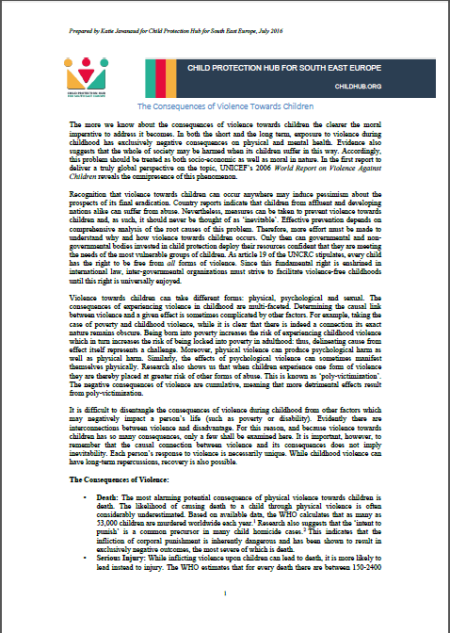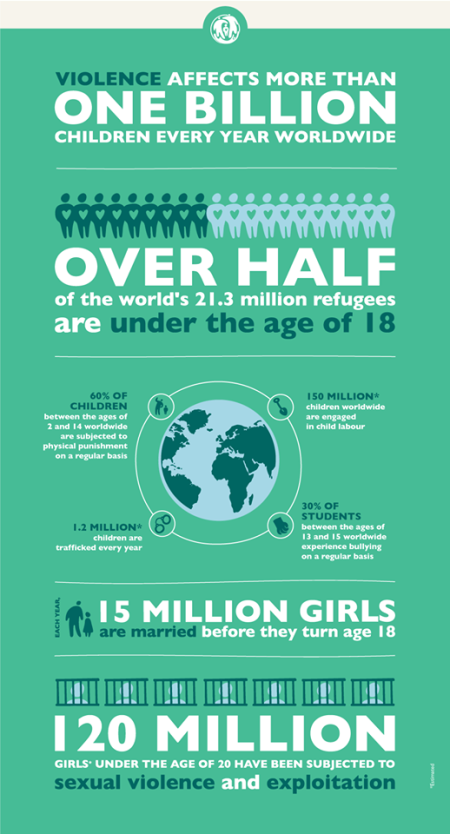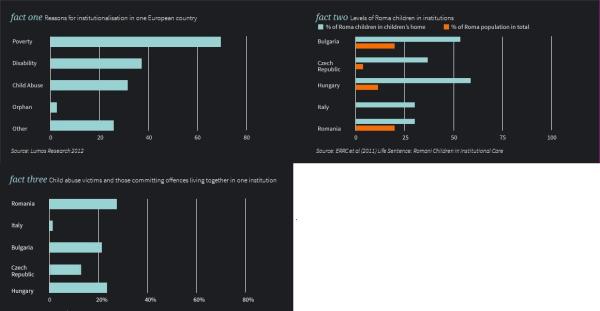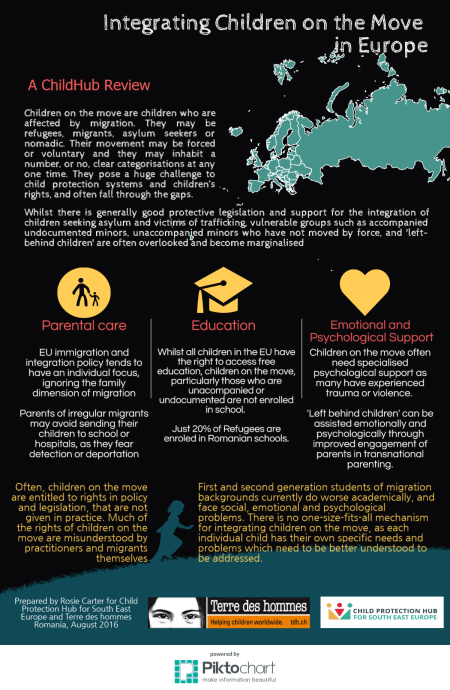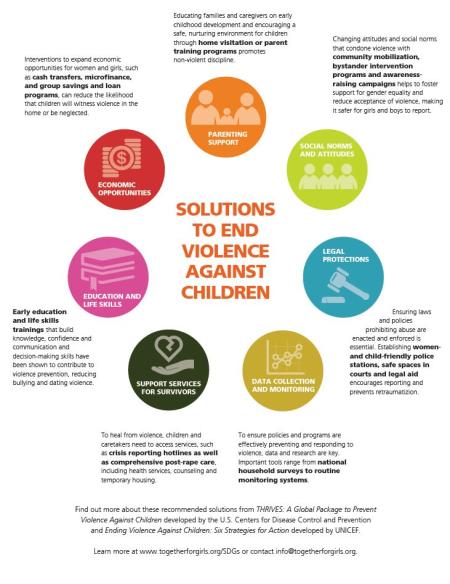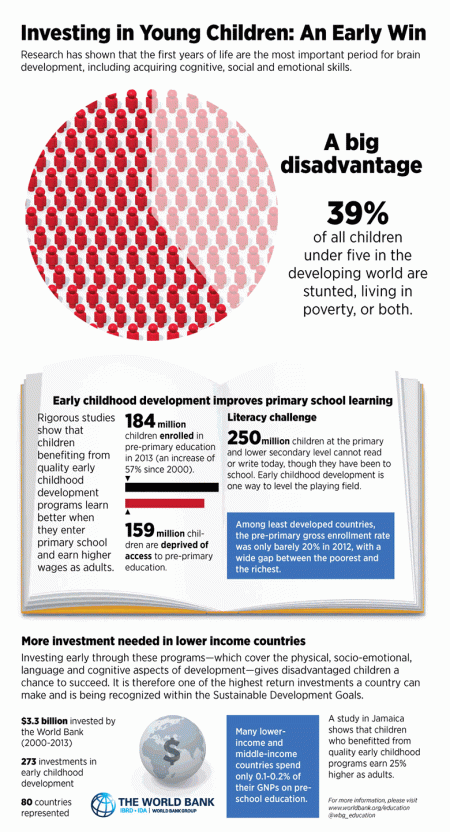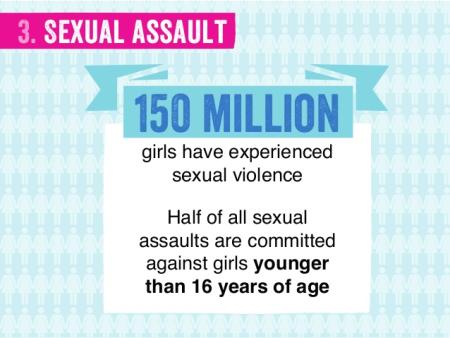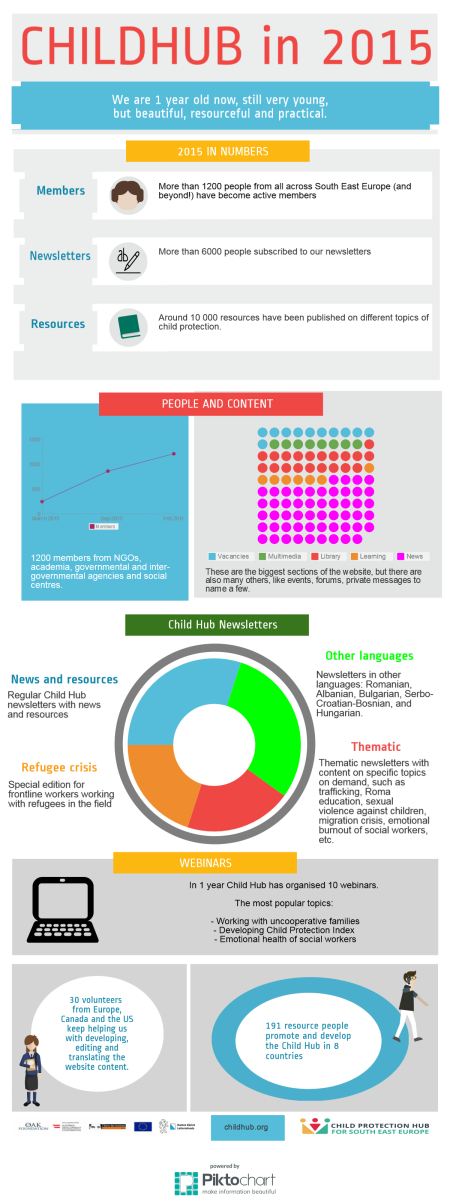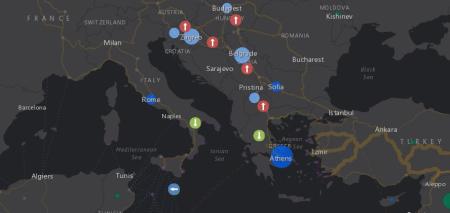
This infographic provides essential information on the consequences of violence towards children. In both the short and long term, all forms of violence experienced during childhood can lead to poor physical and mental health. Behaviorally and socio-economically, the experience of violence has significant and very negative repercussions.
All statistics used here are derived from the following sources:
- http://www.who.int/violence_injury_prevention/violence/activities/child_...
- European Report on Preventing Child Maltreatment (2013) WHO
- Violence towards children in the EU: Current Situation (2014) European Parliamentary Research Service
- The costs and economic impact of violence against children (2014) Child Fund Alliance
- Understanding child maltreatment an juvenile delinquency: the research, Wisdom
- http://www.cdc.gov/ViolencePrevention/childmaltreatment/consequences.html

You might like..
yes
0
32643
This ChildHub review highlights that the more we know about the consequences of violence towards children the clearer the moral imperative to address it becomes. In both the short and the long term, exposure to violence during childhood has…
0
121
Below you will find the infographics that WithoutViolence has produced in cooperation with their fellows and partners.
Without Violence is a field-building project designed to help violence prevention leaders and practitioners communicate…
0
141
World Vision launched "It Takes a World" five-year campaign to tackle violence against children -
Infographic
More info at:
http://wvi.org/ittakesaworld
0
17
The UK Report for the House of Lords, 'Children in Crisis' published an infographic about foreign unaccompanied children in Europe.
0
5
LUMOS has published some infographics.
Fact one: Reasons for institutionalisation in one European country (source Lumos 2012)
Fact two: Levels of Roma children in institutions (Bulgaria, Czech Republic, Hungary, Italy, Romania) (source: ERRC 2011)…
yes
0
54
Children on the move are children who are affected by migration. They may be refugees, migrants, asylum seekers or nomadic. Their movement may be forced or voluntary and they may inhabit a number, or no, clear categorisations at any one time. They…
0
535
In this infographiс, the Together for Girls partners present an overview of solutions to end violence against children. The Post 2015 Advocacy Toolkit, to which these materials belong, presents a wealth of information on practices…
0
137
This infographic, which can be viewed as a PDF attachment, displays the physical damage as a result of violence on a child's brain. The infographic can be viewed online with this link or downloaded as a 2 page PDF attachment.
0
236
Futures Without Violence, an American organisation collects information, resources on the effect of trauma on children who experience violence. They also developed a campaign against violence. The infographic summarises protective factors that can…
0
24
More than 150 million children under the age of five in developing countries do not have access to early childhood education. Investing in early childhood development is one of the smartest investments a country can make.
0
532
This infographic from PLAN international presents the scale of gender based violence across the world. It is thought that 120 Million girls have experienced rape or sexual violence globally, and that one in three women experience physical or sexual…
0
26
Over the last 6 months the Bureau has investigated how different countries in Europe treat unaccompanied minors seeking asylum. The data reveal stark inconsistencies between countries, and a large gap between a country’s policies and the reality of…
0
14
In this 2014 report, the European Parliament explores the different types of violence experienced by children across the EU. The socio-economical costs of failure to act now to prevent violence are significant. This report therefore argues in favor…
0
26
This infographic tells about the work of the Child Protection Hub in 2015. It summarizes all the input from the Hub members and supporters and covers major numbers, people and content in a visual way.
0
432
IOM has created an interactive map showing most recent trends, based on ESRI statistics.
Since January 2016, 84,406 migrants, including asylum seekers are reported to have arrived to Europe by land and sea routes. Tragically 410 migrants are known…

